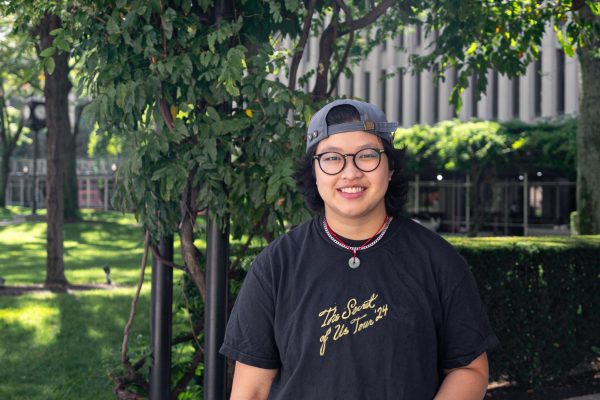Once, getting dressed in New York was a declaration — bold, personal, unmistakable. Now, it feels like just another checkbox on a to-do list. One scroll through your feed, and it’s hard not to notice a certain uniformity. The city’s uniform is all neutrals — curated looks engineered to seem effortless — scrubbed of anything resembling real risk. It all feels so … algorithm-approved. Which leaves us wondering: Has personal style truly faded—or have we just become a little too careful, too curated, too unsure of how to show up as our full, unfiltered selves?
We live in the golden age of , yet we’re suffering from a famine of originality. Social media platforms, which once honored creativity and originality, now peddle aesthetics. Every week, a new one is introduced: clean girl, mob wife, office siren. While playful on the surface, these cycles speak volumes about where we are culturally. These aesthetics are not just about clothes; they are about identity. And right now, identity is being shaped by the internet, filtered and reflected back through a collection of screens.
The problem? When everyone is looking for the same thing—virality, validation, a seat at the trending table—we stop dressing for ourselves. We start dressing for approval. Aesthetics become uniforms. Originality quietly slips away, replaced by the subtle pressure to stay on-brand. This is fashion sterilized by the scroll; personal style on life support.
Personal identity is packaged like a Pinterest board — stylized for approval, smoothed of anything reflecting reality.
New York, once celebrated for its eclectic charm and fearless style, is beginning to feel a bit subdued. Like a media influenced gentrification of authenticity. Walk down almost any street downtown, and the resemblance is striking: oat-toned outfits, curated interiors and coffee cups posed just so, all polished for the feed. Instead of leading with innovation, people lean into safe, widely appealing aesthetics. Personal identity is packaged like a Pinterest board — stylized for approval, smoothed of anything reflecting reality.
The rise of the content economy has made sameness more profitable than distinction. As trend cycles accelerate to warp speed, fashion’s lifespan has become a sprint. Microtrends are hot one week and cringeworthy the next. That pressure trickles down: Gen Z, in particular, is being socialized to dress with social media in mind — how many likes, how much engagement, will this outfit be dated tomorrow?
This is not a new phenomenon. The cultural drought of personal style has roots. In the 2000s, fast fashion flooded the market, following the expiration of the Multi-Fibre Arrangement in 2005 and the phase-out of global textile quotas. By the time social media took off, our access to clothing skyrocketed while our taste eroded. Platforms like Instagram became both runway and retail. Anyone could go viral — but often by blending in just enough to be aspirational, without risking real individuality.
Right now, our collective taste is dictated by social media algorithms, venture-backed aesthetics and the invisible hand of cultural sameness.
The irony? Fashion was never meant to be sterile. It is meant to be alive—unpredictable, expressive and deeply personal. It’s supposed to say: this is who I am, take it or leave it. But now, we dress not to be seen, but to be accepted. As cultural theorist Stuart Hall once said, “identity is not fixed — it’s formed in relation to the world around us.”
Right now, our collective taste is dictated by social media algorithms, venture-backed aesthetics and the invisible hand of cultural sameness. In an age where our cultural world is increasingly pushed through online trends, it is no wonder why personal style has begun to feel more like performance than expression.
So, what do we do?
We start dressing for life again, not to impress an invisible audience.
We remember that personal style isn’t an aesthetic, it is a series of choices that tell the story of you. It’s the boots you wore to your first protest. The thrifted jacket that fits like a hug. The colors you reach for when you feel invincible. Personal style is autobiographical. It cannot be found in a haul or a TikTok roundup. It has to be lived.
As connoisseurs of taste and culture, we have to ask: What does this era of sterilized style say about our culture? About our confidence? About our ability to take risks not just online, but in real life? Perhaps the quiet anxiety of not fitting into a digital mold has made us forget how joyful and liberating it can feel to stand apart.
In a world obsessed with becoming the next “it girl,” the boldest thing you can do is be you. Fashion should feel like freedom, not a formula. Let’s stop performing and start dressing like we mean it.


